In my blog post on Colombia, I would first like to enthuse about the diversity of Colombia. I never spent more time in any other country on my trip: 10 weeks!
When people talk about Colombia, many quickly think of the guerrillas, Pablo Escobar and the blatant violence in the country’s recent history. I’ve done a lot of research into the history and politics of Colombia and I’ll try to (briefly) outline the conflict and share some connections that I didn’t realise before!
And then I would like to introduce you to a social project that is doing fantastic work in Comuna 13, which was once the most dangerous neighbourhood in the world.
But first, let’s talk about how fantastic Colombia is: the country has 50 million inhabitants and covers almost 1 million square kilometres – almost three times the size of Germany. A very large part of the land area consists of the forests of the Amazon region and a large part of the population lives in the valleys between the Andes mountain ranges. In the capital Bogotá alone, almost 8 million people live at an altitude of almost 2600 metres!
As in most countries crossed by the Andes, the longest mountain range in the world separates a strip of Pacific coast from the Amazon jungle. But Colombia is so big that there are many other landscapes in the country, some of which I was able to visit: the fascinating Tatacoa Desert, for example, or the highest coastal mountain range in the world: the Sierra Nevada of Santa Marta. And Colombia is the only country in South America that has (significant) coastlines on both the Pacific and the Caribbean (Atlantic). That alone makes Colombia a country worth travelling to and spending months in. For me, it is clear that the two and a half months I was able to spend there were definitely not enough!
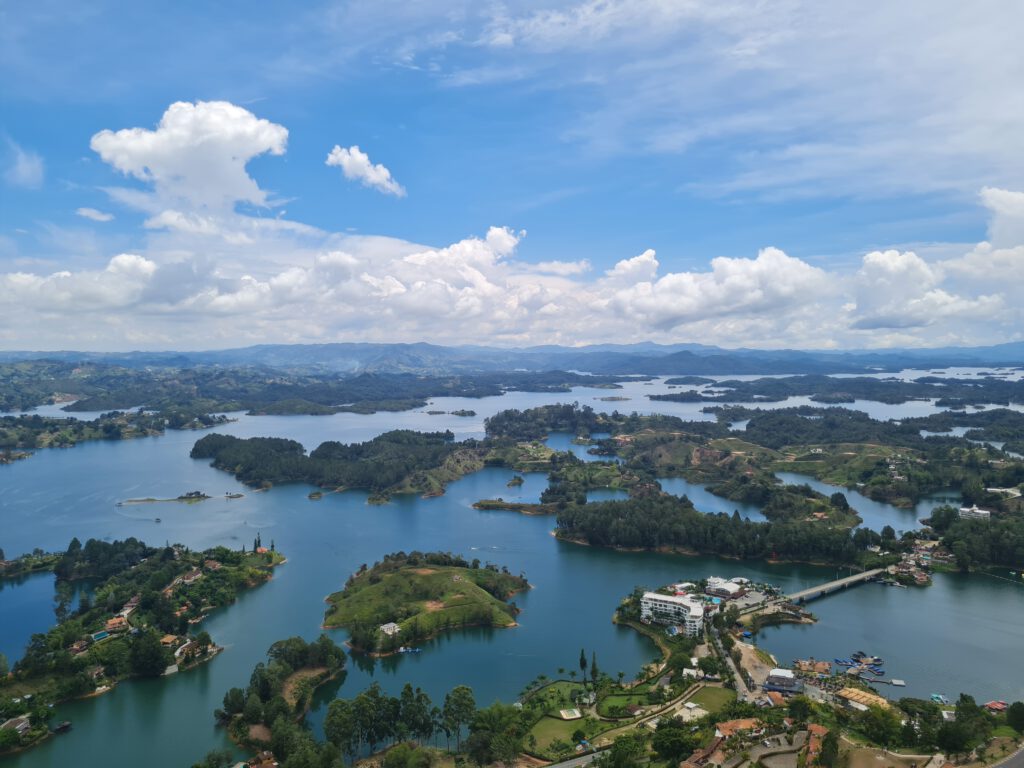
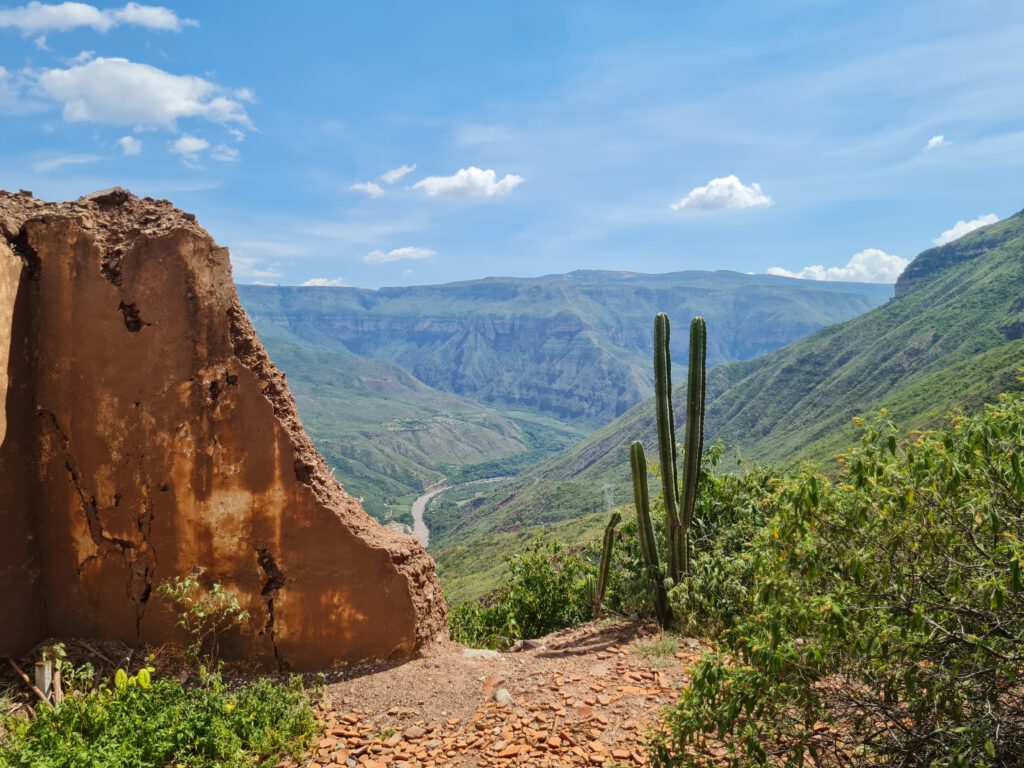
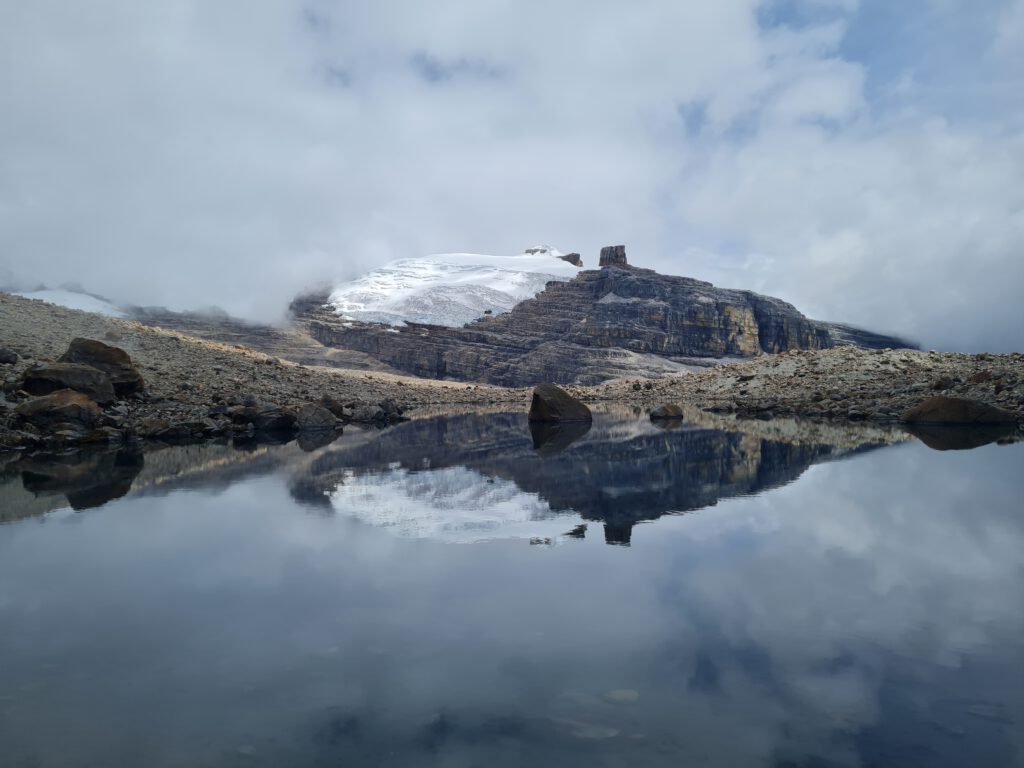
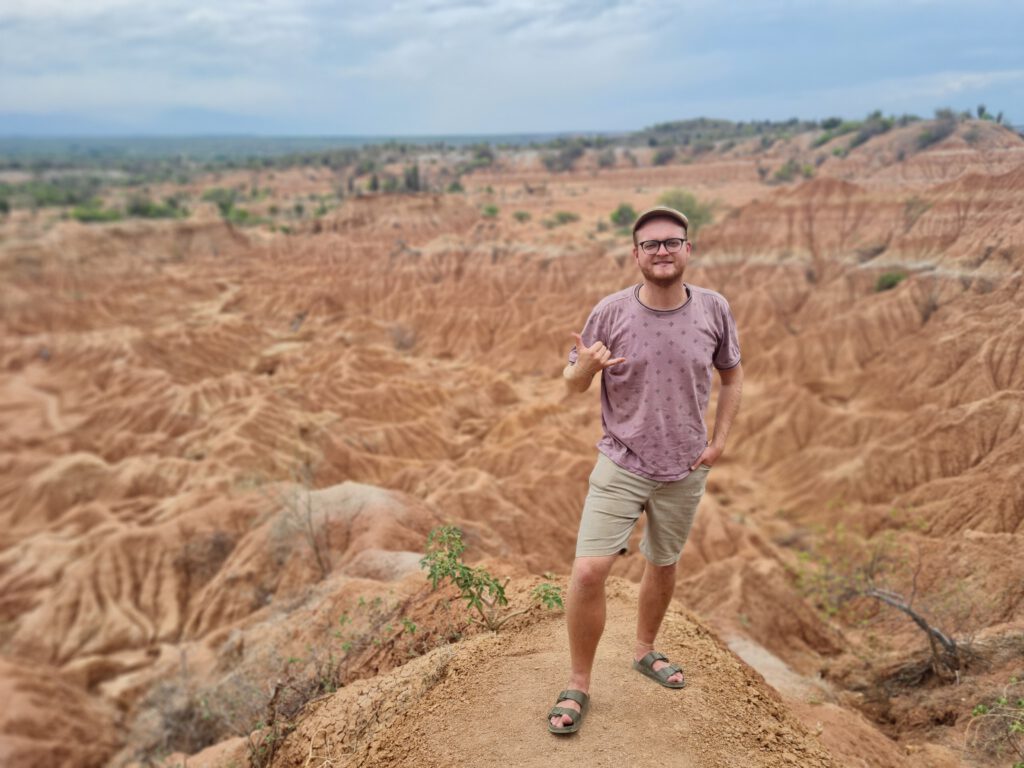
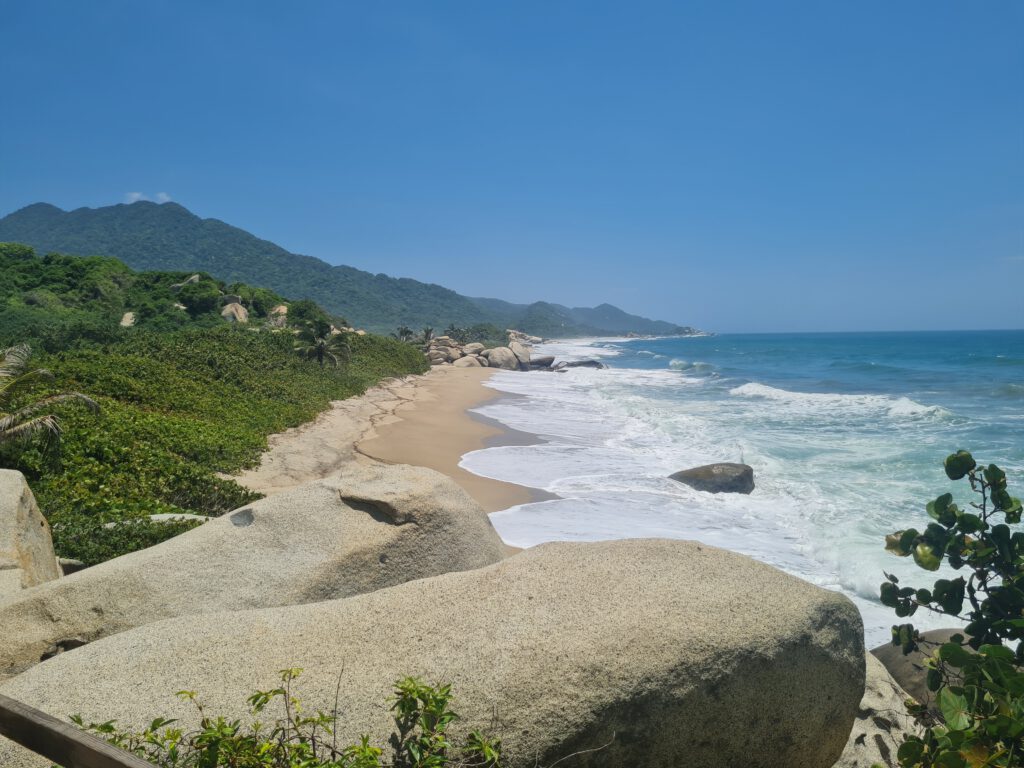
The fact that I spent so much time in this country was partly due to the fact that I had previously travelled quite quickly in Central America and visited many countries in a short space of time, but also because I was fascinated by the people and culture, especially in the big cities. I spent 3 weeks in Medellin alone, 1 week in Bogotá and 6 days in Cali.
In Bogotá, I became particularly familiar with the artist Fernando Botero, who died on the very weekend I was in Bogotá. He was just as world-famous and unique as the Colombian writer Gabriel Garcia Marquez, who was awarded the Nobel Prize for Literature in 1982.
And Colombia has nothing to hide when it comes to music, with world stars such as Shakira and Carlos Vives. And the band Morat, which comes from Bogotá, is currently one of the best-known artists in the whole of Latin America, regularly breaking records.
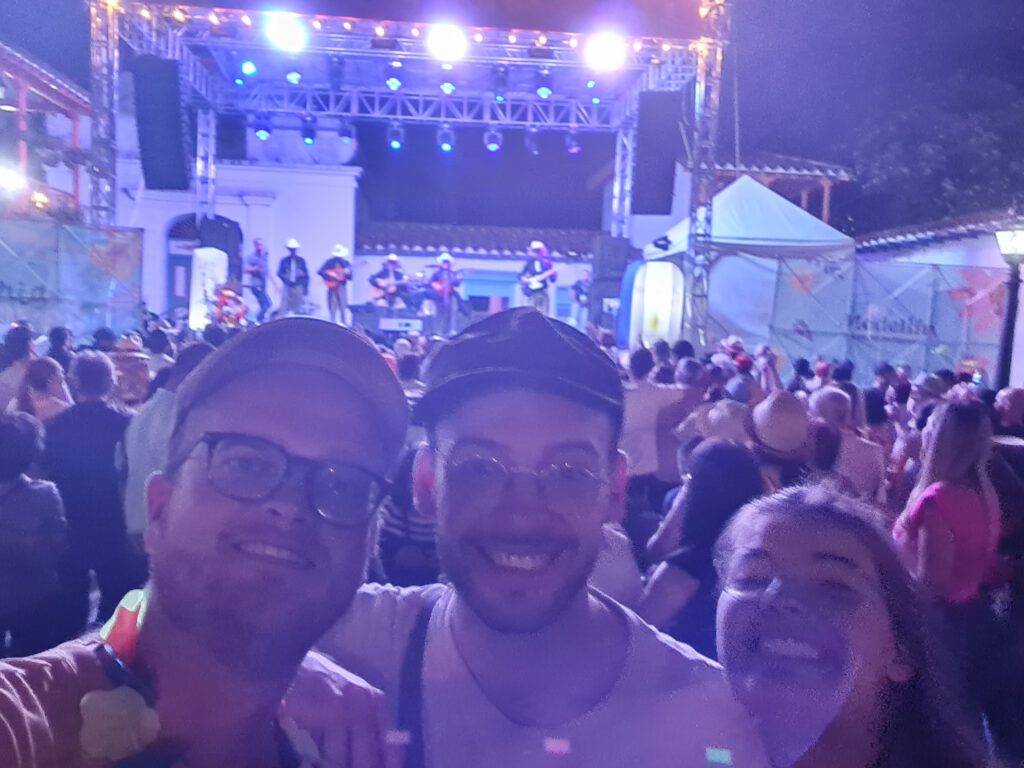

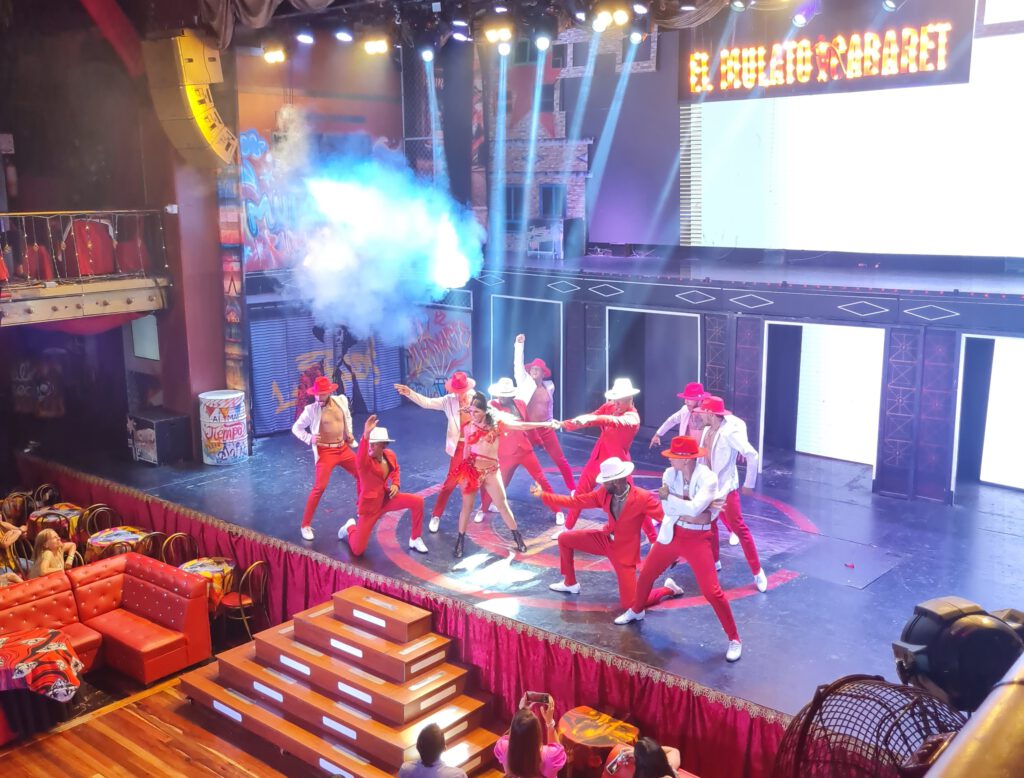

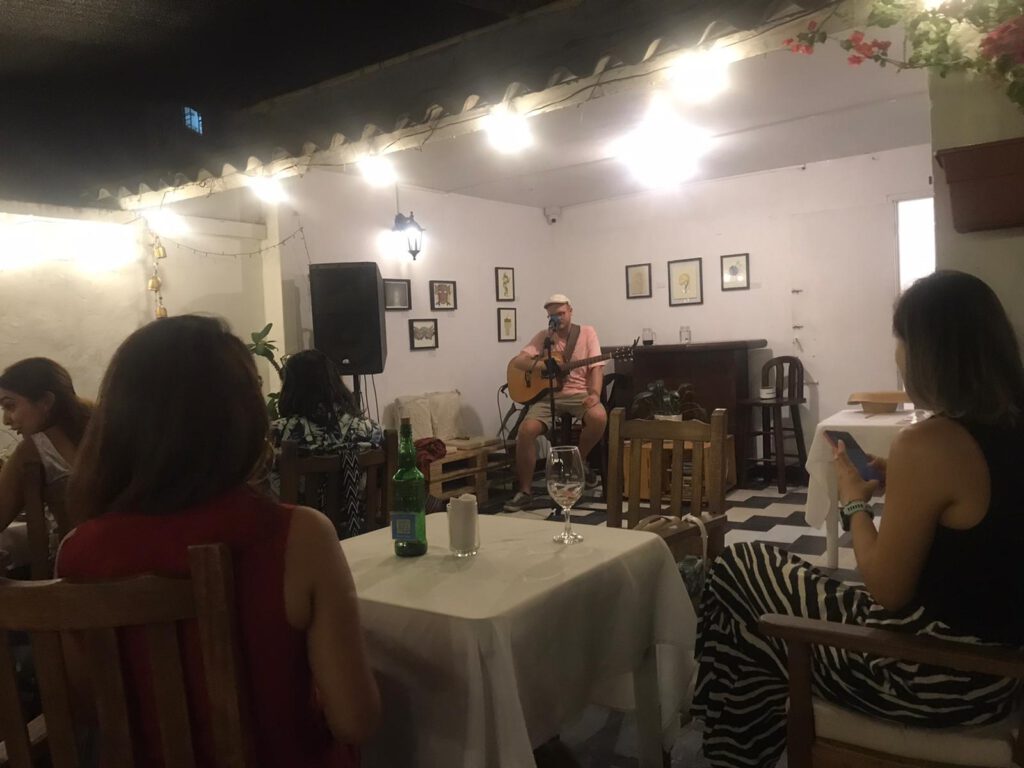
There is also a lot of traditional music in Colombia! This has to do with the different regions and indigenous cultures (there was not one overpowering one, but many different ones) and also with the many different foreign influences. For example, the accordion came to Colombia from Germany in the 20th century, which had a huge influence on the “Vallenato” musical style! Vallenato also consists mainly of African rhythms and Spanish melodies – super exciting! A Vallenato band played live at my friend Mafe’s stepfather’s 50th birthday party and the atmosphere was brilliant!
Incidentally, I know Mafe from my semester abroad in Mexico. I visited her and Dani in Bucaramanga. Overall, my time in Colombia was mainly characterised by the many great people I met again and got to know for the first time. I travelled for a fortnight in the north with my sister Jette and met Jakob and Sarina again in Medellin, who were not the only boat hitchhikers I met in Colombia. Mahats invited me to the El Juego community, where I was able to spend a week doing a lot of self-care and learning a lot!
In Colombia, I also started couchsurfing really intensively for the first time and was able to meet so many great people and also used couchsurfing in the countries to come. I spent more nights in South America staying with private individuals than in hostels. However, I also had great encounters in some hostels, including with Colombians, such as in the Fatima Hostel with the bartenders Mario, Alex and Carlos, where I was able to play several small concerts!
And sometimes couchsurfing happens without the app: Sarina was in the mountains of Cocuy with a family on their coffee farm and had such a good time there that she connected me with Noury and Wilder and I visited the coffee farm for two days and helped out too!
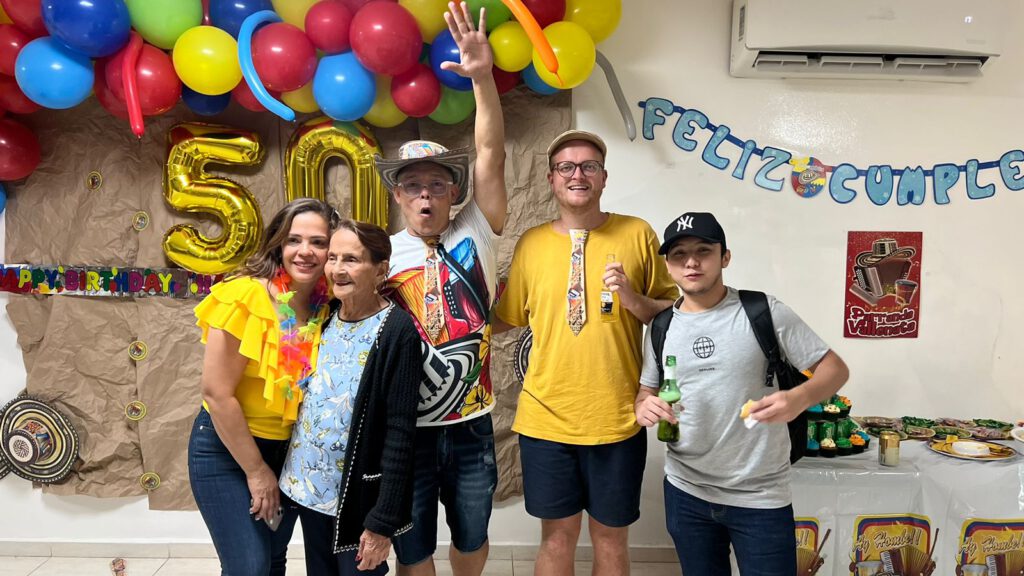
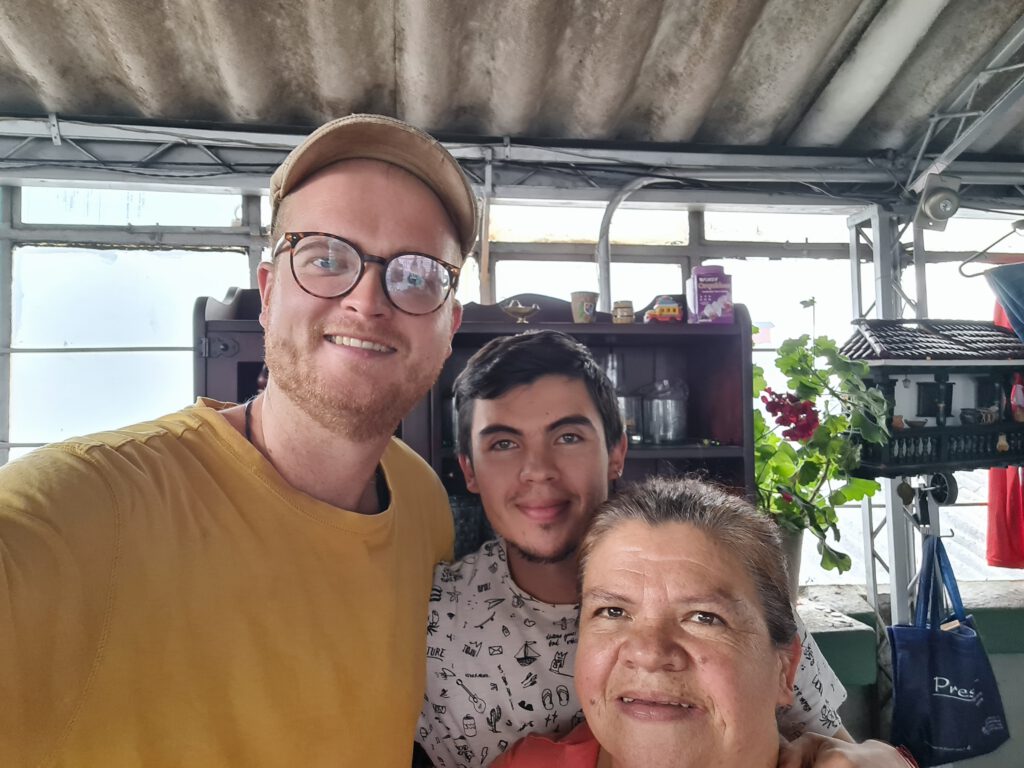
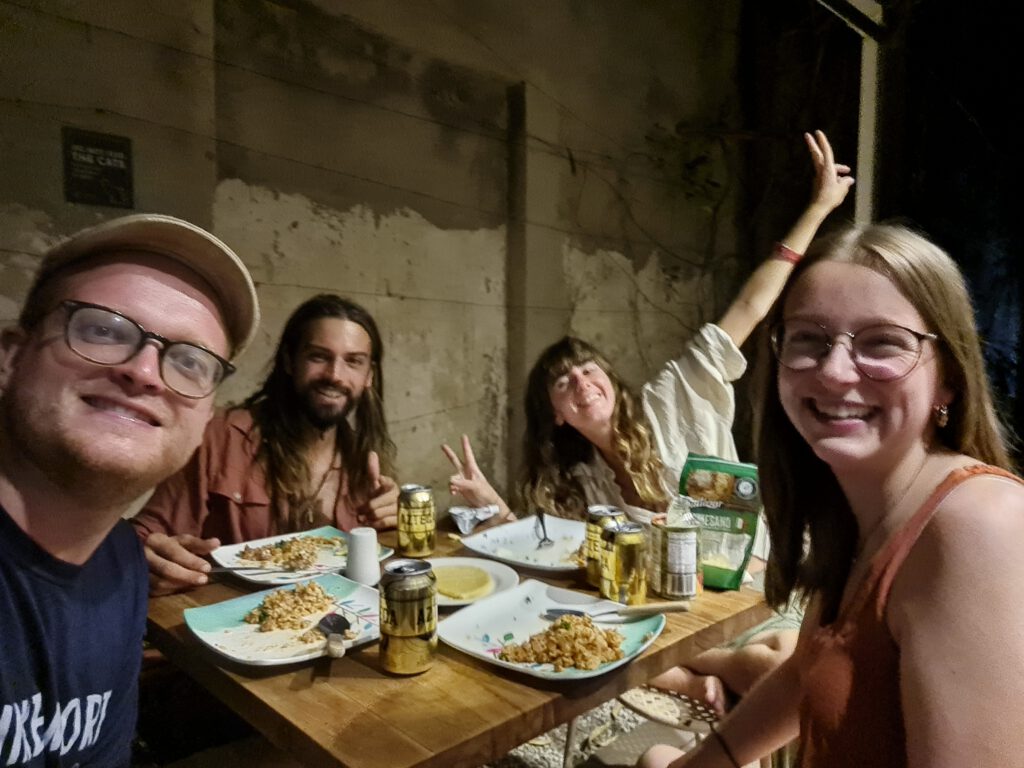
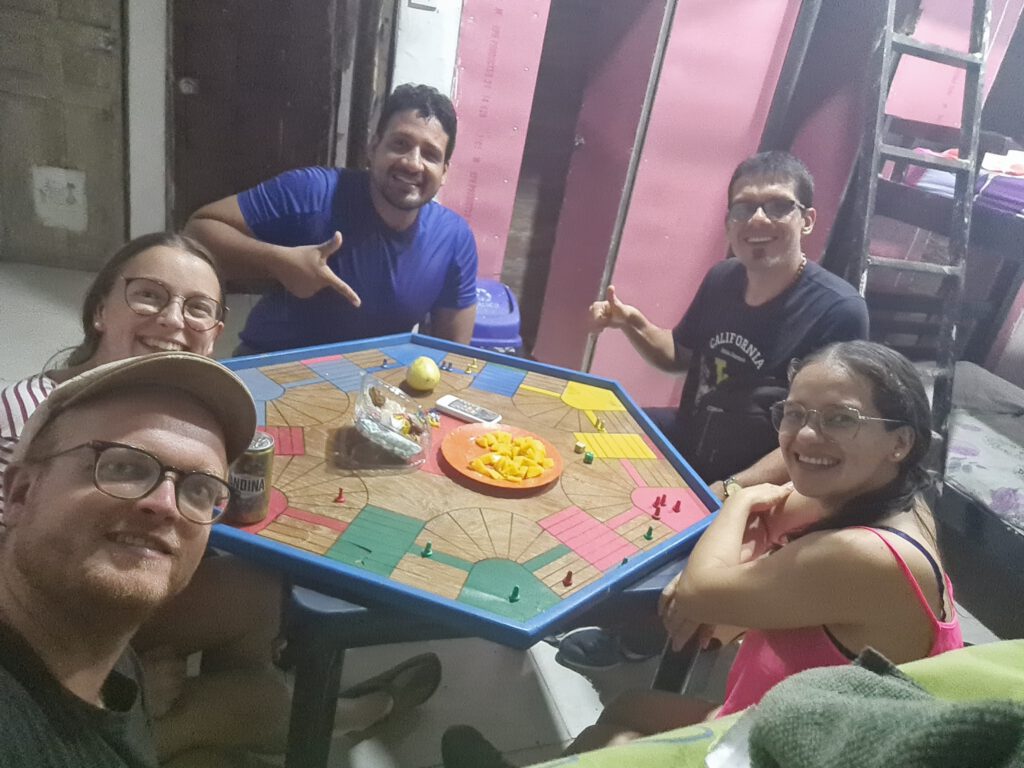

The only thing that didn’t blow me away in Colombia was the food, which for my taste is much tastier in the much smaller Ecuador. In Colombia, I was a little disappointed by the arepas, which I had imagined would be much tastier and more varied – like the pupusas in El Salvador, but perhaps they had raised my expectations too high.
On the other hand, I got to know many great projects in Colombia, of which the social project “Comuna Project” in particular left its mark on me. I would like to introduce this project in more detail here:
Comuna Project – by, for and with the people from Comuna 13
Comuna 13 in particular, one of the poorest neighbourhoods in Medellin, has suffered greatly from the violent conflicts in Colombia in recent decades, which I outline below. The guerrillas in particular took control of large parts of Comuna 13, hiding hostages here and forcing many young people to join them. Time and again, they clashed with the military and later with the paramilitaries, with the population suffering the most. During the Orion military operation in 2002, many people were murdered without it being clear whether they even belonged to the guerrillas. A friend of mine, who had never had anything to do with the guerrillas, only narrowly escaped death when his mother stood in front of him and guaranteed that he had nothing to do with the guerrillas.
These many episodes of violence in Comuna 13 have only served to exacerbate poverty. In recent years, a small part of Comuna 13 has been upgraded with graffiti and turned into a tourist destination that is probably visited by every tourist in Medellin. However, as almost 200,000 people live in Comuna 13 and only a small proportion of them benefit from tourism, many problems remain.
The “Comuna Project” association has set itself the task of combating inequality and enabling a transformation from within the community. To this end, they have set up various projects, such as English lessons, psychological counselling, support with building and renovating homes and a food bank where disadvantaged children and senior citizens receive a free lunch from Monday to Friday.
The idea is communitarian, i.e. many of those involved come from Comuna 13 themselves and generate income for the projects, e.g. through tours or a restaurant. Time and again, they also manage to organise institutional sponsorships and support.
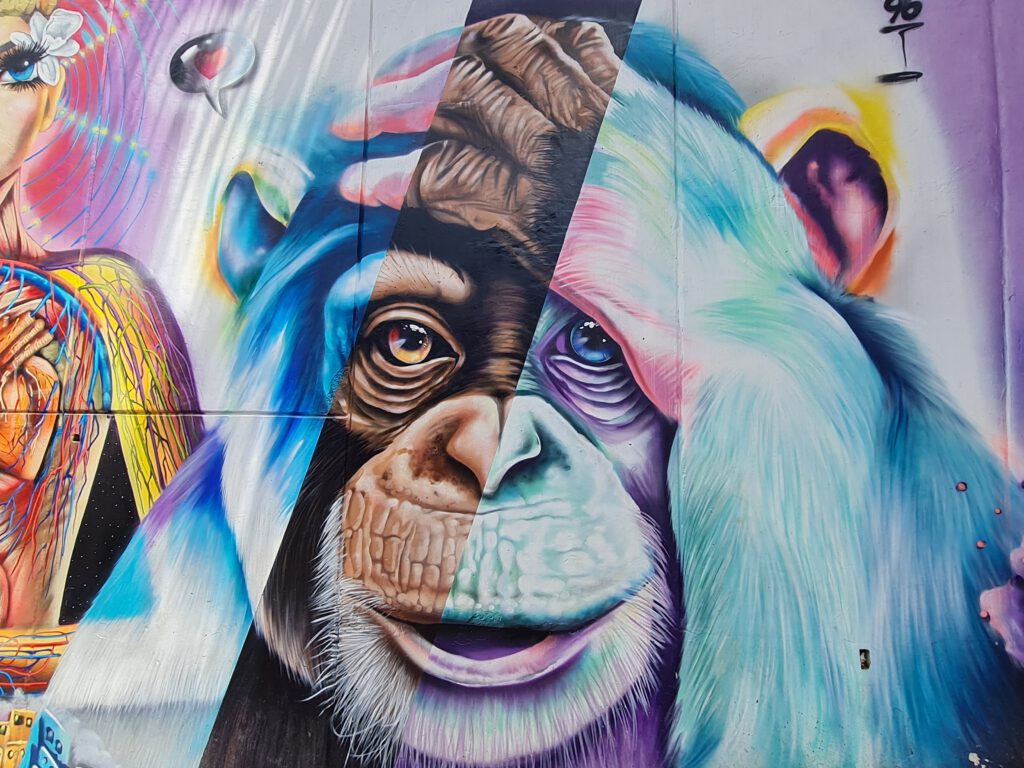
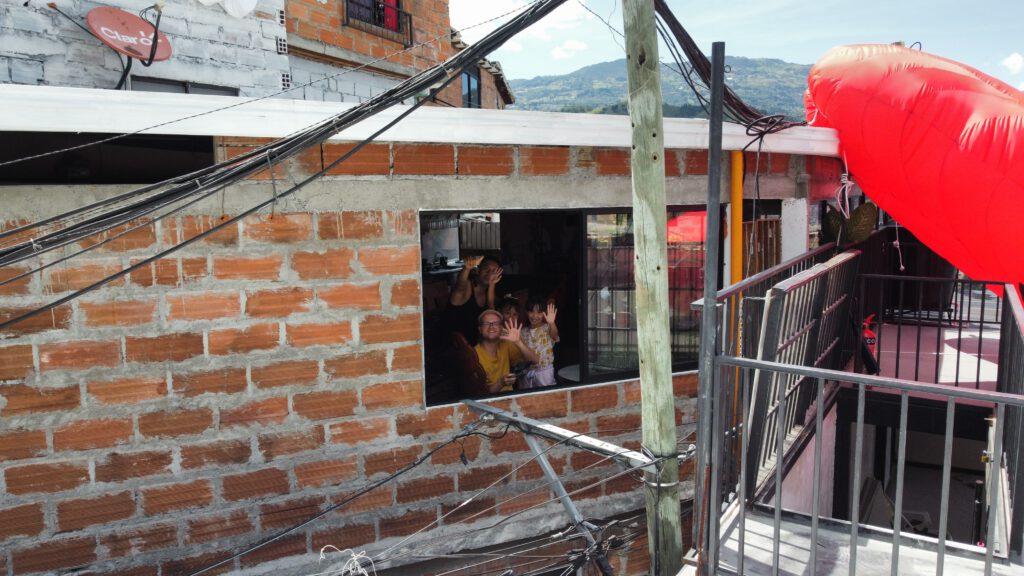
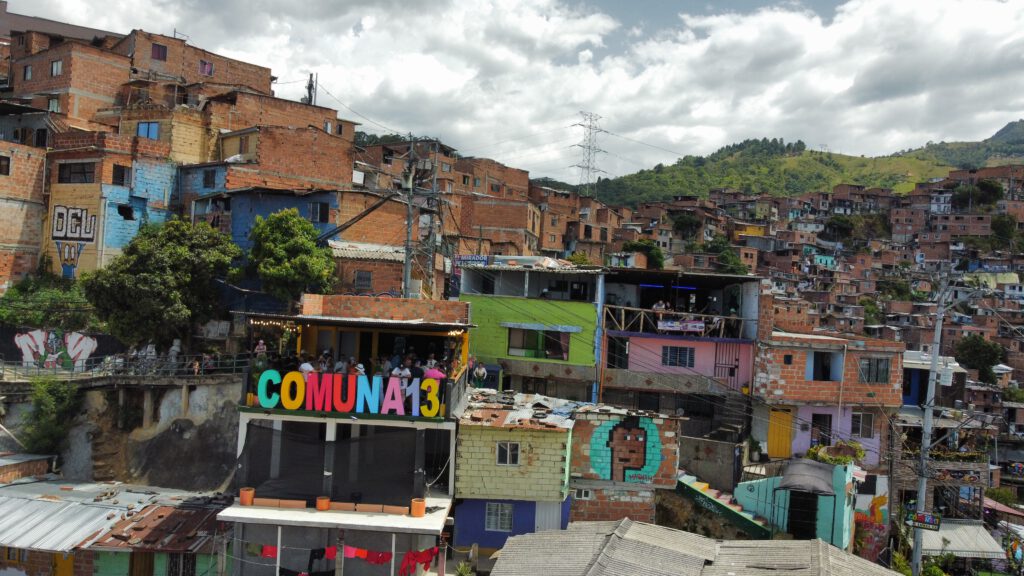
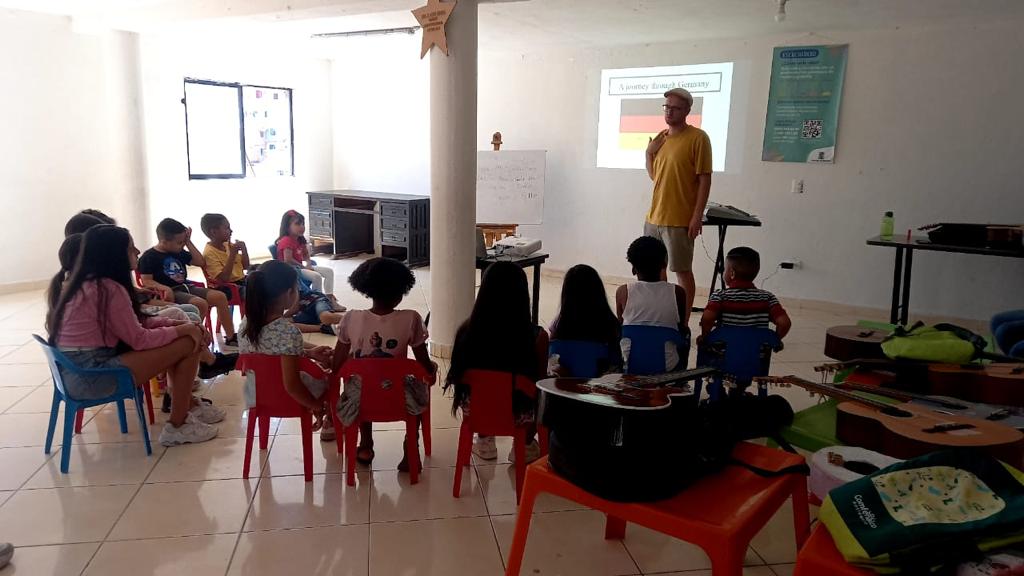
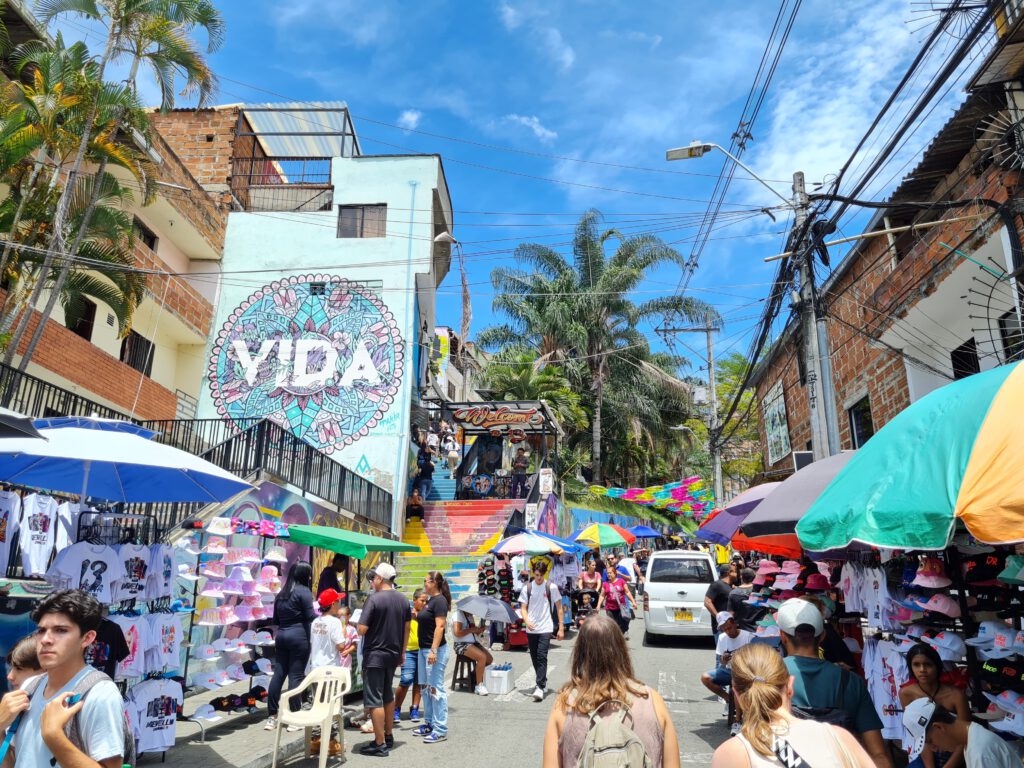
I was only able to get a taste of this project during my three weeks in Medellin, but what I saw inspired me! The dedication with which David, Leidy and Angel (my main contacts) and the many other volunteers drive the project forward is impressive. They never lose sight of the big picture and are trying to build something with the “Comuna Project” that could be repeated in other neighbourhoods or cities.
You can find more information about the Comuna Project here.
If you would like to support the project, I would be delighted. If you have any specific questions, please contact me
Armed conflict and drug war in Colombia
As in the other countries I travelled to, I spent a lot of time in Colombia dealing with politics and history, and because I was in Colombia for so long, I also learned a lot there. I was particularly interested in the armed conflict and drug war, which is still very present in Colombia. There was a free walking tour in Bogota that summarised a lot of this and I would like to summarise the content for you here. I’m deliberately keeping this short to give you an overview. If you would like to read more about the topic, I can recommend literature or we can talk about it in person.
When people write about the conflict, it often starts with the founding of the FARC guerrillas, but to understand what the conflict is all about and who the key players are, you have to look back at least as far as Colombia’s independence.
For the sake of completeness, I’ll start at the beginning. The first people arrived in what is now Colombia around 20,000 years ago, initially as hunters and gatherers, but they began farming from around 5000 BC.
Unlike in large parts of Latin America, however, there was no great empire here like that of the Incas further south or the Mayas and Aztecs in Central America. Instead, there were many small tribes in Colombia (e.g. the San Agustin, Chipcha, Capuli and Arawak) that lived quite independently of each other, so that traditions in different parts of Colombia still differ greatly today. This episode is described as pre-Columbian (before Columbus), which is not to be confused with pre-Columbian, which describes the phase before the founding of Greater Colombia.
And then came the Spaniards: as in other parts of Latin America, they killed the indigenous people, brought in diseases and destroyed buildings and culture without regard for what they had achieved. As a result, the indigenous population in Colombia was quickly reduced and the Spaniards brought slaves from Africa to provide new labour.
In Colombia, the Spaniards hoped in particular for enormous gold deposits after they found a lot of gold among the indigenous people. According to legend, there was one place where they would find all the gold: El Dorado!
The legend probably originated from a ceremony held by the indigenous people in Lake Guatavita near Bogotá. For centuries, the new rulers threw priceless gold figurines into the depths of the lake to make sacrifices to the gods. When the Spaniards arrived, this tradition no longer existed, but the myth of the legendary Eldorado, which was one of the main reasons for the complete conquest and exploitation of Latin America by the Spaniards, developed through stories.
In terms of administration, the poly-kingdom of New Granada developed, which included present-day Colombia, Venezuela, Ecuador and Panama.
After repeated minor uprisings during the colonial period and a period of independence from 1810 to 1816, New Granada finally gained independence in 1819. The head of independence was the Venezuelan Simón Bolivar, who also played a decisive role in the wars of independence in Peru and Bolivia. In the various countries that he liberated and which he wanted to develop into a single state of Greater Colombia, Bolivar had several generals who supported him. In Colombia this was Francisco de Paula Santander.
The conflict between conservatives and liberals that characterised so many Latin American countries after independence began to develop right at the beginning of the Republic of New Granada and whose characteristics I examine in more detail in my article on history in Central America. Bolivar prevailed over Santander with his conservative ideas and increasingly developed into a dictator. This was probably one of the reasons why Venezuela and Ecuador split from New Granada after his death. From 1886, today’s Colombia and Panama were called the “Republic of Colombia” with a new constitution, which was the second democracy in America after the USA.
Conservatives and liberals had long argued about the organisation of the state; while the liberals demanded a federal system, the conservatives favoured a centralised state. However, the compromise of 1886 did not put an end to the conflict. On the contrary, from 1899 to 1902, Colombia experienced one of the bloodiest wars between conservatives and liberals, the so-called “1000-day war”, in which over 100,000 people lost their lives.
The USA took advantage of the instability in Colombia at this time and invaded Panama in 1903, helping the country to gain independence. What followed for Panama was an enormous dependence on the USA, which secured the rights to use the Panama Canal until the end of the 20th century. More on this in my blog post about Panama.
While the governments in Colombia changed, but mostly the conservatives were in power, power always remained in the hands of the elite – liberal or conservative. In this respect, Jorge Eliécer Gaitán, who set out to become president in 1948, was special in two ways: firstly, he came from the people and not from the elite and, secondly, his ideas were socialist in nature, a direction that had not yet become established among the liberals. Gaitán had previously made a name for himself as a lawyer who drew attention to the massacres of the labour movement in Colombia. He was very close to the people, unlike the elite, he used the suburban railway and was hugely popular with Colombians, who hoped that his rule would bring many reforms and combat poverty. Gaitán was equally feared and hated by the conservatives and the USA.
On 9 April 1948, shortly before the elections, Gaitán was shot dead on the street in the centre of Bogota. In the days that followed, thousands of people took to the streets, demonstrating and setting fire to large parts of Bogota’s city centre. The police and military had no control over the situation – the riots went down in history as the Bogotazo.
Around 15 minutes after the murder of Gaitán, the suspected murderer was discovered in the immediate vicinity of the assassination site and killed on the spot by the mob – the man had been released from a psychiatric institution on the same day. In retrospect, however, there are enormous doubts about this version, as it is unusual that the murderer remained in the neighbourhood for 15 minutes. There are also parallels with other historical murders in which a “mentally ill person” was also portrayed as the perpetrator a short time later and killed on the spot so that he could not be interrogated.
The most common theories see the conservatives or the CIA as the mastermind behind the murder. I can well imagine that it might even have been both. In any case, both sides got what they wanted: the USA avoided another socialist government and the Conservatives won an election they thought they had lost because no other liberal wanted to stand for election after Gaitan’s death.
In addition, the conservatives used the Bogotazo as an excuse to use the military to crack down on liberals with enormous vigour. The armed conflict between liberals and conservatives had broken out again a few years earlier and was called “La Violencia” during this phase. “La Violencia” entered a new phase. The conservatives took more and more land from the liberals through violence or controversial laws and “La Violencia” cost the lives of over 200,000 civilians between 1946 and 1963.
As the conservatives were in power and used the military to crack down on liberals, they retreated further and further into the countryside and mountains. But even there, the conservatives kept tracking them down. Both sides killed many civilians, and various liberal self-defence groups (repúblicas independientes) were formed to defend themselves.
After a conservative military dictatorship (there have been comparatively few in Colombia’s history), liberals and conservatives agreed on the so-called “Frente Nacional”, an agreement that stipulated that power would alternate between liberals and conservatives every four years and that ministries would also be divided up. However, the “Frente Nacional” thus ensured an even stronger consolidation of political exclusivism and left-wing actors in particular saw themselves challenged to use violence to ensure a different political system. Various left-wing guerrilla groups emerged from the former “Repúblicas Independientes”, some of which are still active today.
The aim of the guerrillas was to establish a new political order, their ideas were primarily communist/Marxist and their means of choice was above all violence. The state’s response was generally even more violent and showed similarly little consideration for civilians.
The former self-defence groups became armed, violent groups that fought the state, its representatives and the military. Their income has changed considerably over time, but mainly consists of kidnapping, extortion, gold mining and the production and smuggling of illegal drugs such as marijuana and cocaine.
The best-known guerrilla group, the FARC, was founded in 1964 after the bombing of the República Independiente “Marquetalia”. Among the best known were the ELN and the M-19, which seized the Palace of Justice in Bogotá on 6 November 1985 and killed all 11 supreme court judges during the hostage-taking – the 35 terrorists were also killed. Pablo Escobar was definitely involved in the planning of the attack, which brings us to another important player in the conflict: the drug cartels.
From the mid-1970s, the cultivation and export of cocaine in particular developed extremely rapidly, leading to the emergence of several very rich and influential cartels. The two largest were the Medellin cartel led by Pablo Escobar and the Cali cartel led by the Orejuela brothers. As is typical in drug wars, the fights between the cartels were usually about power/supremacy and money, but of course the cartels also came into conflict with the state, which was fighting the illegal drug trade, particularly under pressure from the USA. In some cases, the guerrillas allied themselves with the cartels, in other cases they clashed with them and, particularly since the death of Pablo Escobar and the arrests of the Orejuela brothers in the 1990s, the guerrillas have increasingly taken over parts of the drug market.
While Pablo Escobar and his Medellin cartel became more famous, the Cali cartel was the more successful one most of the time, with larger revenues. At its peak, the Cali cartel controlled around 80% of the drug market in Colombia. This was probably mainly due to the fact that the Orejuela brothers behaved more quietly and went about their business in the background, while Pablo Escobar was very open in his dealings with the state and even harboured political ambitions himself.
His aim was to end the war against the cartels at a political level and to protect his business empire politically.
In 1982, he actually made it into the Colombian parliament for a short time, as he was held in high esteem by parts of the population, especially in his hometown of Medellin, where he had a lot of infrastructure, hospitals and schools built. However, after public accusations and protests from many members of parliament, he had to resign his mandate after just a few weeks and decided to use terrorism to achieve his goals. In particular, he wanted to prevent a law that would allow the extradition of drug smugglers to the United States. To this end, he detonated car bombs at random locations in the centre of Bogotá, murdered countless police officers and once even exploded an entire plane with 107 passengers in order to eliminate opponents inside. The main objective of eliminating the presidential candidate César Gaviria was even missed because he was not on board. With this unscrupulous assassination, Escobar lost the support of the population and antagonised the USA even more, as two Americans were on board.
In the 1990s, the influence and violence of the cartels declined, especially after Escobar’s death. But the military’s war against the guerrillas continued.
As national and international criticism of the military’s actions was high, the Colombian state founded a number of paramilitary groups in the 1990s, which they brought together under the umbrella of the “Autodefensas Unidas de Colombia” in 1997 and whose sole declared aim was to fight the guerrillas. The idea was that an independent group would be freer in its actions, but it was precisely this that fell foul of the state a short time later, as the paramilitaries became independent, radicalised and increasingly violent, including against the civilian population. It was not until 2006 that they were recaptured by a controversial law, but some of them still exist today and have a strong influence in politics. The law included amnesty for former ex-paramilitaries. 3700 paramilitaries who turned themselves in between 2003 and 2006 confessed to a total of over 25,000 murders for which they were not punished. As a result of the law, many drug lords posed as former paramilitaries in order to avoid punishment.
It is assumed that the paramilitaries are responsible for more civilian casualties overall than the guerrillas.
A peace agreement was reached with the FARC in 2016. The first version was narrowly rejected in a controversial referendum. After negotiations, a second version emerged, which was approved by parliament; the people were not consulted again for fear of another rejection. A large part of the FARC was disarmed, there was transitional justice with partial amnesia and the FARC was guaranteed some seats in parliament.
Together with other developments, the agreement has led to a sharp decline in violence in Colombia. However, violence remains high in some rural areas in particular, some of the FARC have rearmed and other guerrillas are still active. Today, however, the guerrillas are more focussed on drug trafficking than on fighting the state. The current president is in fact a former member of the guerrilla group M-19, which disbanded in 1990.
President Gustavo Petro is currently in peace talks with the ELN guerrilla group.
The effects of the decades-long conflict can still be strongly felt today, with Colombia being the country with the most internally displaced persons worldwide in 2018.
It will also be interesting to see what happens when the FARC’s ten guaranteed seats expire and the party may no longer be elected to parliament. Potential for conflict remains in many places…
